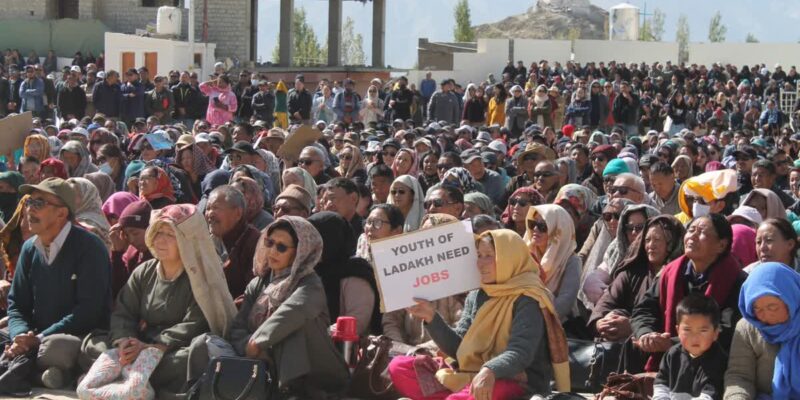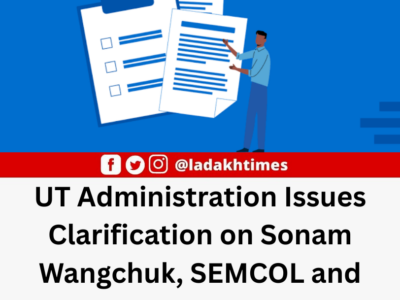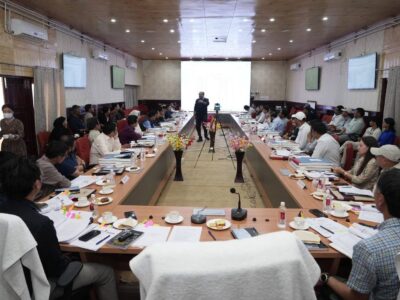 Ladakh, India’s remote Union Territory with a population of approximately 304,000 (projected from 2023 Aadhar estimates), is facing a deepening unemployment crisis in 2025, exacerbated by stagnant job creation and unmet promises following the abrogation of Article 370 in 2019. The Periodic Labour Force Survey (PLFS) 2023-24 reports Ladakh’s overall unemployment rate at 21.9% for individuals aged 15 and above, significantly higher than the national average of 3.17%. The situation is more severe among the youth (aged 15-29), with an unemployment rate of 33.6%, and among females, where it soars to 45.2%. Among graduates, 25.6% remain unemployed, compared to the national average of 13.4%.
Ladakh, India’s remote Union Territory with a population of approximately 304,000 (projected from 2023 Aadhar estimates), is facing a deepening unemployment crisis in 2025, exacerbated by stagnant job creation and unmet promises following the abrogation of Article 370 in 2019. The Periodic Labour Force Survey (PLFS) 2023-24 reports Ladakh’s overall unemployment rate at 21.9% for individuals aged 15 and above, significantly higher than the national average of 3.17%. The situation is more severe among the youth (aged 15-29), with an unemployment rate of 33.6%, and among females, where it soars to 45.2%. Among graduates, 25.6% remain unemployed, compared to the national average of 13.4%.
The workforce participation rate in Ladakh is 39.6%, equating to approximately 120,000 individuals. Of these, only 88,000 are employed, leaving around 32,000 without jobs. District-wise, Leh, with a population of 152,000, reports an unemployment rate of 19.8%, while Kargil, housing 157,000 residents, faces a higher rate of 23.7%.
In the Union Budget 2024-25, Ladakh received an allocation of ₹5,958 crore, marking a 32% increase from the previous year’s ₹4,500 crore. This includes ₹2,035.49 crore for establishment expenditures and ₹3,922.51 crore for central sector expenditures across various sectors such as agriculture, water supply, sanitation, rural development, power, forestry, wildlife, medical and public health, and education. However, only 60% of these funds have been utilized, primarily due to bureaucratic inefficiencies.
As of 2022, over 5,000 government positions, including 1,000 gazetted posts, remain unfilled across various departments. To stabilize employment, more than 10,000 positions need to be filled, yet recruitment processes have been sluggish. Approximately 30,000 aspirants, as per Staff Selection Commission (SSC) data, are affected by age constraints, with many surpassing the age of 30 due to recruitment delays since 2019. The absence of a Public Service Commission in the Union Territory has further hindered gazetted recruitment processes.
These challenges have led to widespread protests, with the youth demanding expedited recruitment processes and relaxation of age limits. Without immediate and effective intervention, Ladakh’s economic potential and the aspirations of its youth risk being severely compromised.
The unemployment crisis in Ladakh is not just a statistic — it is the lived reality of thousands of young people whose dreams and potential are slipping away. The promise of development post-UT status is fading fast in the face of unfilled posts, underutilized funds, and administrative silence.
How long will the administration remain silent while thousands of Ladakhi youth continue to age out of opportunities they were promised years ago?
what is the purpose of a ₹6,000 crore budget if it can’t secure the future of its own youth?
It’s time the administration breaks its silence and takes swift action — before the region loses an entire generation of potential. Ladakh’s youth deserve action, opportunity, and a future — not delayed promises.
inputs by: Bahaud-Din
bahuddinnagvi05@gmail.om















Comments